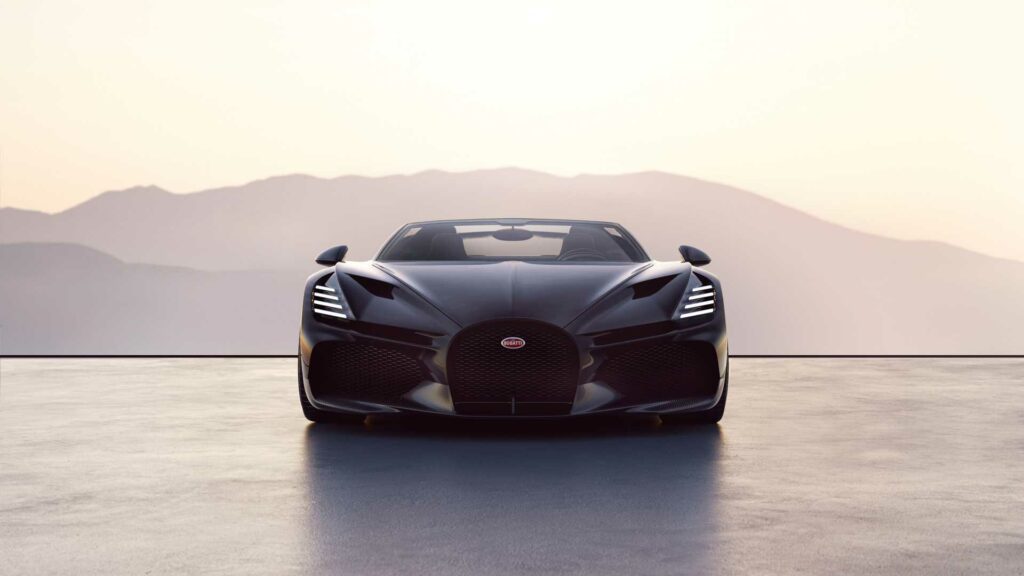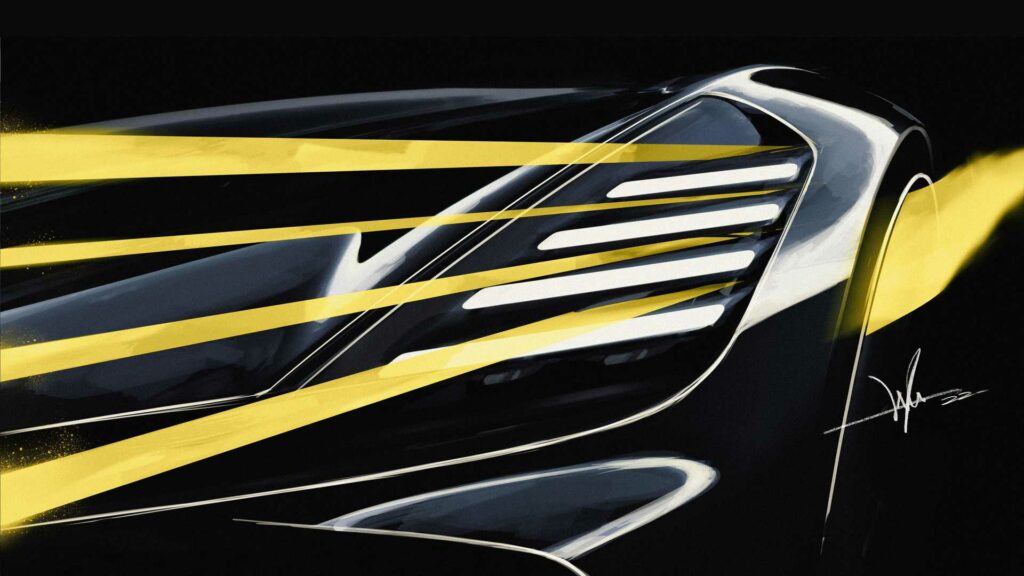All good things come to an end, including 16-cylinder-powered French hypercars. Bugatti’s unveiling of the Mistral roadster marks the end of not only the marque’s use of the era-defining 8.0L, quad-turbocharged W16, but the non-electrified internal combustion engine too. All Bugatti models going forward will be hybridized or entirely electric, and all 99 Mistrals produced have been sold for $5M each. The Mistral will be on display for Bugatti enthusiasts during Concours weekend in Pebble Beach, CA.

As Bugatti aims to create the fastest, most mechanically advanced vehicles of its time, it’s no surprise the Mistral has been developed with one thing in mind: a world record. Bugatti estimates a top speed of 261 miles per hour; this 1,600-horsepower roadster will be put to the test likely around when the vehicle begins deliveries in 2024.
Bugatti said in a statement that there is only one goal in mind with the Mistral: “to become the fastest roadster in the world once more.” Its world-record intentions come after its previous flagship roadster — the Veyron Grand Sport Vitesse — clinched the record of fastest production roadster shortly after its 2013 unveiling.
While the ultra-fast Mistral has the heart of its Chiron Super Sport 300+ sibling, it has been radically redesigned in relation to the Chiron to reflect Bugatti’s heritage.

“We know the W16 Mistral will always have significance in the story of Bugatti marking the last time that perhaps the greatest ever automotive powertrain is used in a road going production car,” says Achim Anscheidt, Bugatti Deputy Design Director. “We, as a design team, felt enormous pressure to deliver styling that immediately conveyed this landmark moment, drawing inspiration from some of the most beautiful roadsters in Bugatti history.”
The beautiful roadster in question is none other than the Type 57 Roadster Grand Raid. Bugatti has taken the enlarged fenders and horseshoe-style grille from the Type 57 and applied a modernized interpretation to the Mistral. Air met with the iconic grille is directed through enlarged side vents into the Mistral’s monstrous engine.
This design approach was based on Bugatti’s ‘Form Follows Performance’ ideology, with each component, even the headlights, having a role in reaching new levels of performance.
“The headlights themselves are intricately shaped, incorporating a four-light signature that subtly nods to the W16 Mistral’s four-wheel-drive and four turbochargers,” said Frank Heyl, Bugatti Deputy Design Director. “But their three-dimensional surface also functions as an aerodynamic aid that funnels air through the light and out through the wheel arch to improve aerodynamic drag.”

Bugatti stresses the design was no copy-and-paste of the Chiron’s styling. To accommodate an open-top design, a plethora of changes must occur. The aforementioned X-shaped tail lights serve as a channel for air passing through oil coolers to be directed to the X-shaped design. In addition to the reshaped rear, the air scoops above the headrests are both strong enough to support the vehicle’s weight in the event of a roll-over, and emphasizes the W16’s mighty noise.

The end of the W16 doesn’t mean the end of Bugatti’s next-level performance. Forming a relationship with Croatian hypercar company Rimac calls for a new chapter in Bugatti’s history characterized by electric power. Large engines like the one in the Mistral may be on their way out, but four-digit horsepower ratings and top speeds faster than the winds the Mistral is named after are likely here to stay.
Additional reporting on the Mistral launch will be forthcoming from my interview at with Deputy Design Director Frank Heyl this weekend at Pebble Beach.




Leave a reply